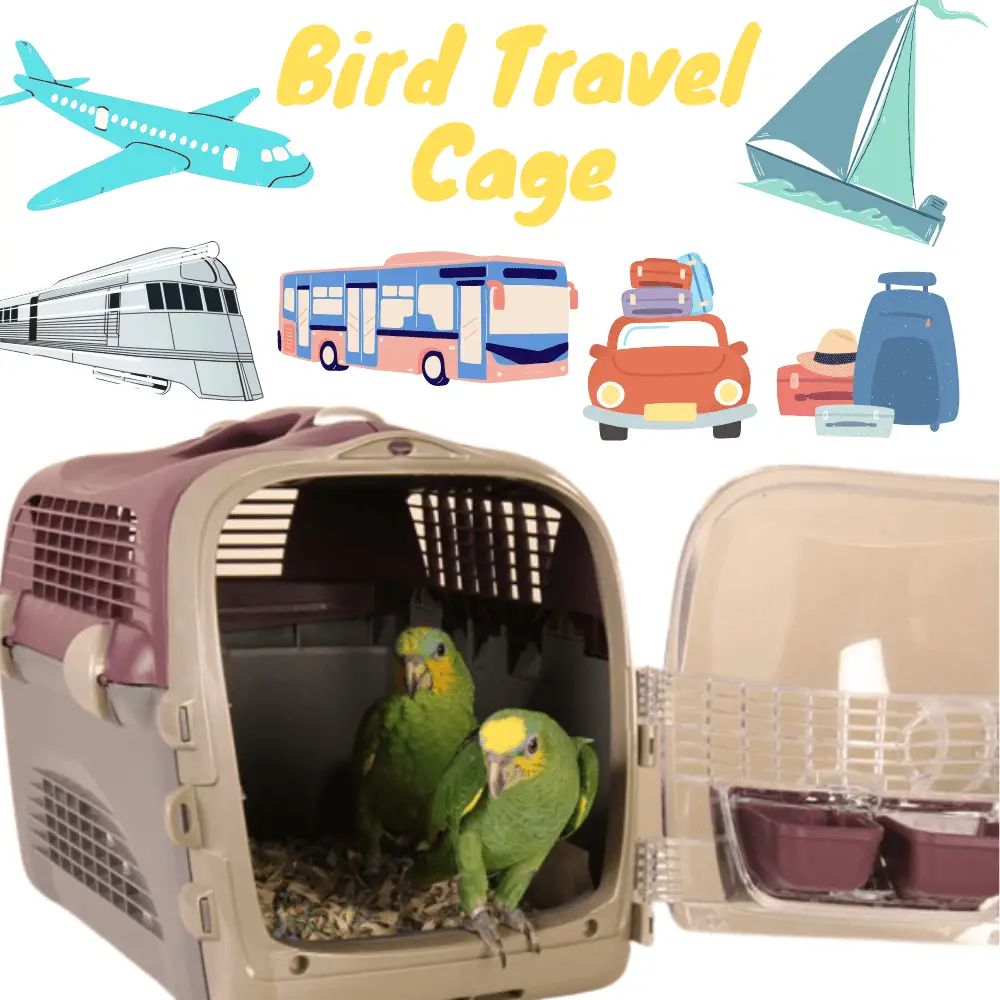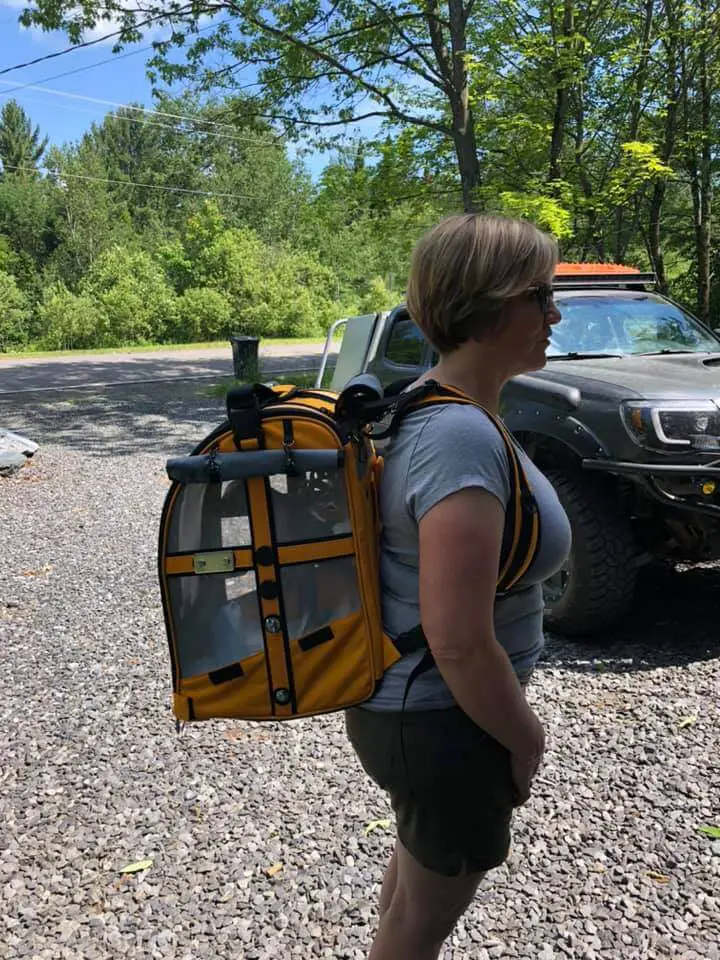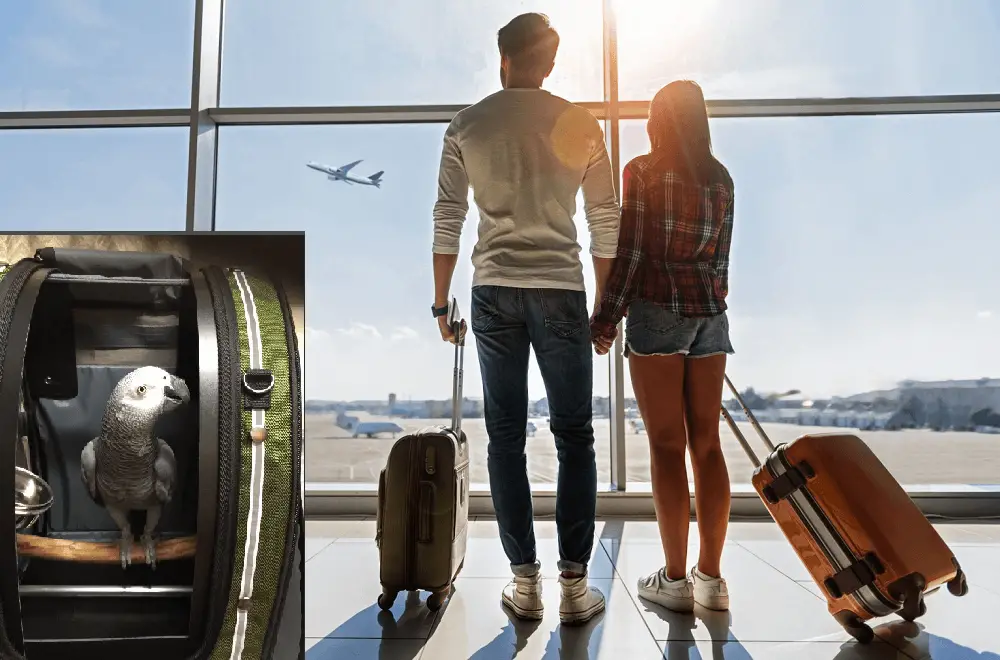How to travel with a parrot by plane, First of all, we would like to inform you that after quite extensive research, we have found very few airlines that accept parrots on board. It also depends a lot on the country you want to take it to.
Transporting your bird by plane is something to do in the event of a last resort (moving, force majeure, etc.). Because you can imagine, but the trip will not bring him anything positive. So before you think about bringing your best suit or your best dress if it’s a business trip, think about your feathered companion.
Sometimes parrot owners are forced to make travel decisions about their pets. It is sometimes difficult to find precise information on “how to” and requirements.
Especially when the animal is a bird. By following this list of recommendations, your planning and travel should be made easier. And hopefully, stress-free for you and your parrot.
How to travel with a parrot by plane
What to do before the flight?
- Contact the airlines first, making sure
- That they accept birds in the cabin.
- Have them make an advance reservation for your bird if they accept one. Most airlines only allow (2 pets per flight) in the cabin.
- Buy an airline-approved cage that will fit under the seat in front of you. If you have a parrot that is too large to stand in a cage that size. You will either need to pay for a seat for your caged bird (if airlines allow it) or consider having it shipped by a company.
The latter should be familiar with the specialized shipping requirements. Also, make sure that the cage has a very secure latch.

- Secure firmly a perch rough surface, such as a rope or natural wood, towards the front of the cage. A dish can also be attached to the door.
Discover our collection of perches by clicking on the image below.
- Familiarize your parrot with this new cage before you go on a trip.
- Have the feathers trimmed by a specialist and cut the nails of your exotic bird. This will make it easier for you as a master and prevent unfortunate loss. If your bird ever “escapes” somehow at the airport. With a well-done pruning, your bird will return its wings to normal within the year.
- Fortify the diet with vitamins and minerals in stress formula for a week before, during, and a week after travel.
- Obtain a health certificate for your parrot in the 10 days before your departure. The health certificate is valid for 10 days. If you are staying at your destination more than 10 days after the date the certificate was issued, you will need to obtain a second health certificate for your return trip.
Check if the airlines have additional requirements. Please understand that the conditions for returning to your country may be different from those for leaving and traveling to another country. There may be stricter quarantine restrictions upon your return.
In the United States for example, if you want to take your tropical bird abroad, you must obtain all the necessary documents from the USDA and the US Fish and Wildlife Service of the Department of the United States.
- Clearly label the cage with a “live animal” sticker along with your personal identification, including where you can be reached at your destination.
SNUCK MY BIRD ONTO THE PLANE!
SOURCE:Logan Paul
What should not be done before the flight?
- Do not line the bottom of the cage. Given current security concerns, you may be asked to remove your parrot and all of its contents from the cage if the bottom is not clearly visible.
- Do not ship on a connecting flight. If you need to ship your bird separately, use direct flight whenever possible. Ship “counter to counter”. This way, your bird won’t be left in a cold, or hot, loading area while waiting for your pickup. Rather, it will be transported inside the terminal to the ticket office.
Right before going to the airport
- Plan to arrive at the airport at least two hours in advance. It is important to arrive early enough.
- Confirm your flight (and all connections).
- Give your parrot the opportunity to drink plenty of water.
- Set of fruits and vegetables fresh and watery in the dish. Good choices include watermelon, watermelon, cantaloupe, red or green grapes, red, green, or yellow peppers (no hot peppers), and cooked acorn or acorn squash.
If your bird is not used to these foods, slowly start adding them to his diet in the week before you leave.
What to do at the airport?
- Inform the ticket office at check-in that you have a domestic bird, with a reservation. Present the health certificate, if requested. Keep the health certificate and receipt for your parrot’s trip together and handy.
- Request that your parrot is hand-searched with a wand rather than x-rays if necessary.
- Stay calm at all times and be as helpful as possible. Many airlines and security personnel are stressed and unfamiliar with birds.
- Stay with your bird as long as possible if you ship it separately. This will relieve your stress and that of the bird.
- Double-check all identification material and stickers on the cage.
- Confirm the arrival of your parrot’s flight if it is shipped separately and pick it up at the arrivals counter.
Transport your Parrot serenely

How to travel with a parrot by plane
Once onboard, airline staff will advise you on where to store your transport cage. If it’s small enough, it will usually fit under the seat in front of you. Place one of the lightweight ventilation covers over the cage except in the front. This will help prevent drafts from reaching your bird while still allowing air circulation.
If you are traveling with a large parrot and have paid for a separate seat. Secure the cage in the seat with the seat belt by threading the belt through two or three bars on both sides at the front of the cage before engaging the buckle. Drape the cage with the airplane blanket (unless you brought your own cage cover).
Travel with Maximum Safety
Taking your coconut on a trip may seem complicated, but if you follow these tips, everything will turn out for the best.
To allow you to travel in complete serenity with your parrot, we offer a wide choice of parrot transport cages. There is something for all sizes and all colors.
Discover our collection by clicking on the image below.
Pak-o-Bird African grey parrot
 How to travel with a parrot by plane
How to travel with a parrot by plane
If you have already taken a plane with your parrot or if this article was useful to you, please let us know in the comments.






















